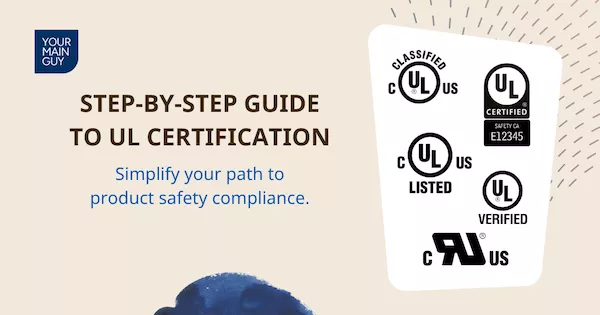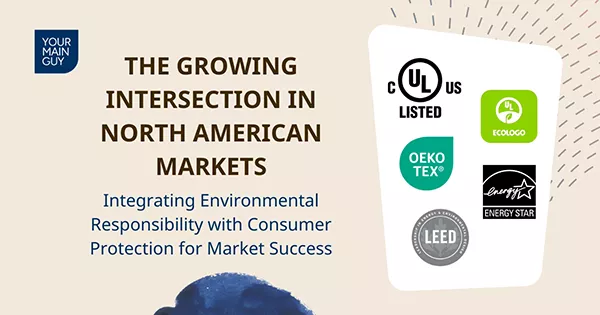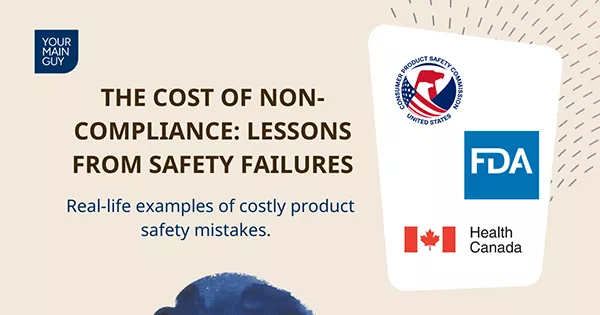The Step-by-Step Process of Getting Your Product UL Certified
Get your product UL certified with our step-by-step guide! Learn the UL certification process, why it's crucial, and how to navigate from initial prep to final approval.
What happens when your innovative product is ready for market, but needs that crucial UL certification? Understanding the UL certification process can seem daunting, but breaking it down into manageable steps makes it more approachable. This guide will walk you through the entire journey, from initial preparation to final approval.
What is UL Certification and Why Does it Matter?
UL (Underwriters Laboratories) certification is one of the most recognized safety certifications in North America. This mark indicates that your product has been tested and meets established safety standards. Beyond being a legal requirement for many products, UL certification opens doors to major retailers, enhances consumer trust, and provides a competitive advantage in the marketplace.
What Should You Know Before Starting the UL Certification Journey?
Before diving into the certification process, several crucial preparations need your attention. First, determine if your product actually requires UL certification. While not all products need it, electrical devices, safety equipment, and building materials typically do. Research your product category on UL's website or consult with industry experts.
Next, assess your budget. UL certification costs vary significantly based on product complexity, ranging from a few thousand to tens of thousands of dollars. Factor in not just the certification fees, but also potential product modifications, testing costs, and ongoing compliance expenses.
Build your certification team early. You'll need technical experts who understand your product's specifications, quality control specialists, and possibly a regulatory compliance manager. Having the right team in place can significantly streamline the process.
How Do You Begin the Application Process?
Starting your UL certification journey begins with selecting the appropriate certification program. UL offers various programs depending on your product type and target market. Visit UL's website to create an account and access their Product iQ database to find applicable standards.
When submitting your preliminary application, you'll need to provide:
- Basic product information and specifications
- Intended market and use
- Manufacturing location details
- Target launch date
- Preliminary technical documentation
After submission, UL will assign a representative who becomes your primary contact. They'll review your application and schedule an initial consultation to discuss specific requirements and timeline expectations.
What Documentation Do You Need to Prepare?
Documentation preparation is perhaps the most critical and time-consuming phase. UL requires comprehensive technical documentation that includes:
- Product Specifications:
- Detailed technical drawings
- Component lists
- Circuit diagrams (for electrical products)
- Materials specifications
- Manufacturing processes
- Safety Documentation:
- Risk assessment reports
- Previous test results
- Quality control procedures
- User manual drafts
- Installation instructions
Pro tip: Organize your documentation using UL's preferred format from the start. Create a master document index and ensure all documents are version-controlled. This organization will save considerable time during the review process.
How Should You Prepare Your Product Samples?
Product sample preparation requires careful attention to detail. UL typically requires multiple samples for testing, often including:
- Production-equivalent samples
- Components and sub-assemblies
- Worst-case scenario configurations
- Samples of different variations if applicable
Ensure each sample exactly matches your documentation specifications. Any discrepancy between samples and documentation can result in delays or rejection. Before shipping, conduct thorough quality control checks and document any specific handling requirements.
Package your samples carefully with clear labeling and include:
- Sample identification numbers
- Your company information
- UL project number
- Handling instructions
- Complete inventory list
What Happens During the Testing and Evaluation Phase?
Once UL receives your samples and documentation, the testing phase begins. The timeline varies significantly based on product complexity but typically ranges from several weeks to a few months. During testing, UL will:
- Verify construction details
- Conduct safety tests
- Evaluate performance under normal and abnormal conditions
- Check compliance with applicable standards
If issues arise during testing, UL will provide detailed reports. Don't be discouraged – it's common to need modifications. Work closely with your UL representative to understand any non-compliance issues and develop appropriate solutions.
What's Next After Testing is Complete?
After successful testing, UL will:
- Issue a formal report detailing test results
- Provide certification documentation
- Authorize use of the UL Mark
- Schedule initial factory inspections
Remember, certification isn't the end of the process. UL requires ongoing compliance through:
- Regular factory inspections
- Product testing
- Documentation updates
- Quality control maintenance
What Are the Key Tips for a Successful UL Certification?
To ensure a smooth certification process:
- Start early: Begin preparation months before you need certification
- Maintain communication: Regular contact with your UL representative helps prevent delays
- Document everything: Keep detailed records of all testing, modifications, and correspondence
- Stay organized: Use a project management system to track progress and deadlines
- Build in buffer time: Unexpected issues almost always arise
The UL certification process requires patience, attention to detail, and thorough preparation. However, by understanding each step and maintaining clear communication with UL representatives, you can navigate the process successfully. Remember that this investment in safety certification not only meets legal requirements but also demonstrates your commitment to product safety and quality to your customers.
By following this structured approach and maintaining detailed documentation throughout, you'll be well-equipped to handle the challenges of UL certification. The end result – that prestigious UL mark – opens doors to markets and provides customers with confidence in your product's safety and reliability.




